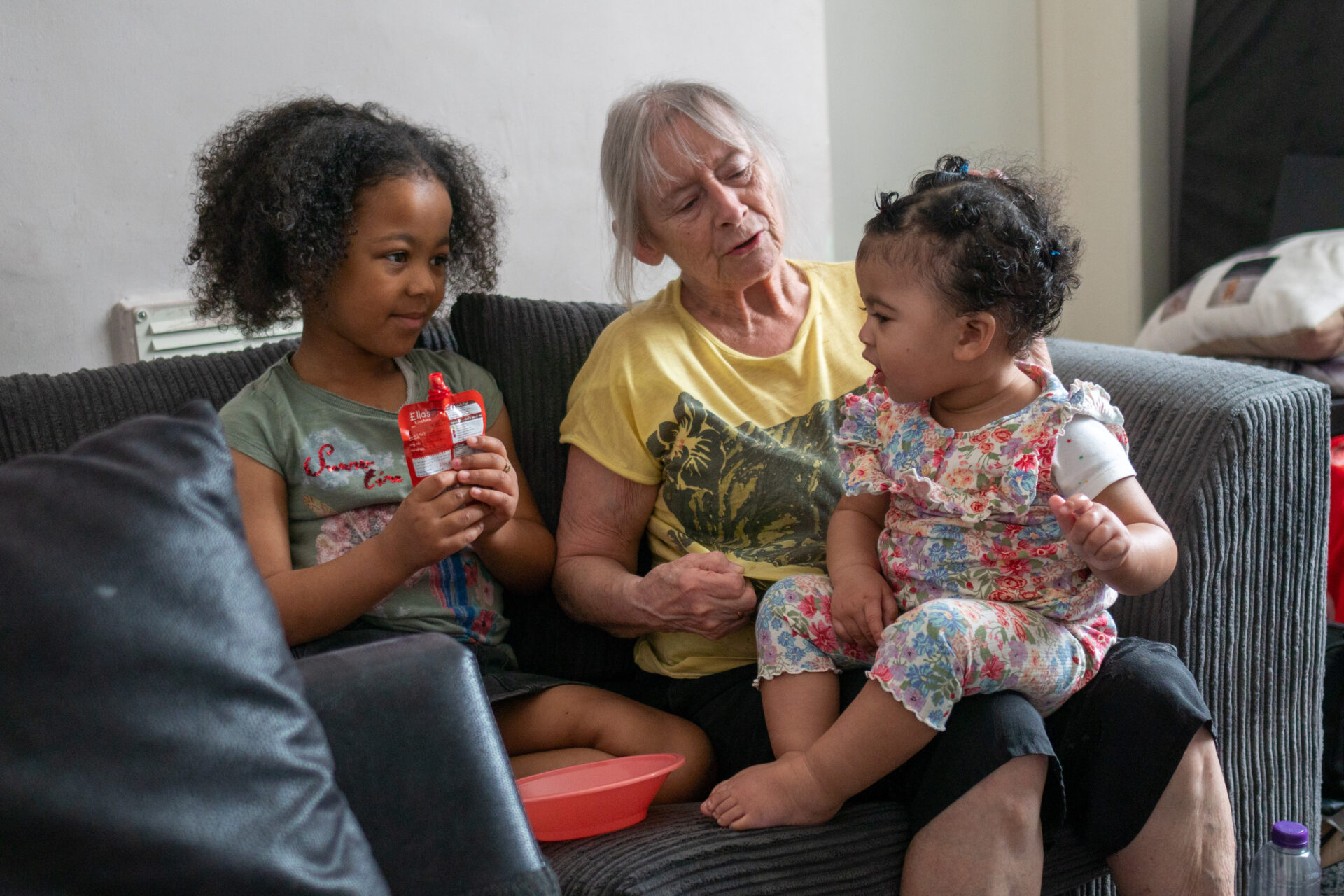
Learn about life story work – what it is, when to consider it, techniques to carry it out (and get support), as well as how it can help kinship children build a positive self-image.
Reading with the children in your care can help create joyful moments and happy memories. It can also help you explore topics like identity and coping with difficult emotions. In this guide, you'll learn how you can use stories to start these discussions.
This advice applies to: England
We’re running a number of online workshops with our partners BookTrust on how you can use stories to discuss emotions and identity. These are free to join and aimed at kinship carers living in England.
If you join, you get a free book for each of your children.
Click on the link below to take you to the section you'd like to read:
Sharing stories is a great way to connect with the child in your care. It can create joyful moments and give you a chance to laugh and talk together. It can have a lifelong positive impact on a child’s life in different ways:
Find out more about the benefits of sharing stories from BookTrust.
Dance Just Like So! by Annemarie Anang and Natelle Quek, about a grandparent and child’s relationship, is perfect for starting conversations about emotions or identity.
Enjoy the story, read by Annemarie, with the child in your care. You can also receive a free copy of the book by filling out the form below.
Offering your child choices when getting ready to share a story can be a great way to get started.
Annemarie gives the example of “where are you going to sit?” You and your child can then start to feel ready to spend time together, sharing and talking about a story.
While reading, you can ask questions about the book.
Annemarie uses the example of “I wonder how Kwesi feels at the moment. What do you think?” These questions can spark conversations about the character’s emotions or experiences.
Sometimes, a character’s experiences may be like yours or your child’s experiences. Seeing similar experiences in a story can help a child understand their own situation.
You can say these similarities out loud and your child might want to do the same. For example, you might live with your grandson like Gran and your child might live with a grandparent like Kwesi.
Your child might want to return to specific pages or walk around the room while listening.
Annemarie says that she likes to get comfortable before reading a story, knowing that some children might prefer to walk around or play with a toy during a story.
These tips can be used with any book. Here are some great recommendations for discussing emotions and identity with the child in your care. They include books that can help children explore difficult emotions and better understand their situation.
All of these books should be available from a public library or good bookshop. If you join one of the online workshops on sharing stories to discuss emotions and identity, you’ll be able to select one of these books to keep for free.
Enjoy 2 more videos with stories and activities to share with your child below. Watch and draw along with George Webster (Why Not?), Adam Stower (Murray and Bun) and Sue Hendra (Supertato) in these 2 videos.
All your child needs in order to take part is a pen and some paper.
Here at Kinship, we offer a range of free support for all kinship carers, including workshops, online advice and information, and peer support groups.
To find services, information and support in your local area, including information about your local children’s services, use our Kinship Compass tool.
You can also contact the Kinship advice team for free, non-judgmental advice and information.
This guide has been written by BookTrust, the UK’s largest reading charity.
Discover more tips, support and book recommendations from Booktrust.
ReadEasy UK offer free, confidential, 1-to-1 reading coaching for adults who want to learn to read. To get support for yourself or someone you know, find out more from Read Easy UK.
Sign up for emails to keep up to date with the information that’s important to you, from support and advice for kinship carers, to our latest news, events and campaigns.